U.S. Naval Riverine Operational Base Song Ong Doc (1970)
![]()
Located on the western coast of South Vietnam’s Mekong Delta region, the Advanced Tactical Support Base at Song Ong Doc served for a short time during the Vietnam War as an operational base for the U.S. and Vietnamese river forces. During 1970 allied naval units patrolled the area’s numerous waterways as part of the Sea Lords strategy to interdict the Viet Cong supply lines and troop movements. As part of the Vietnamization program, the Song Ong Doc facility was completely turned over to the Vietnamese.
On the night of October 20, 1970, the advanced tactical support base at BREEZY COVE (Song Ong Doc) was destroyed by mortars, recoilless rifles, and a company-sized ground attack. The old SEA FLOAT barges were used to rebuild a New Song Ong Doc several miles up river from the old base. In June 1971, the remaining barges were moved to Ca Mau.
The Attack on Song Ong Doc
By
LCDR Lee Wahler USNR (Ret)
additional material from GMCM Robert Stoner (Ret)
During 1969 and1970, several American and Vietnamese naval units used the Advanced Tactical Support Base at the mouth of the Ong Doc River (Song Ong Doc). By July 1970, those units were RVN [Vietnamese] River Patrol Group 62 (along with Naval Advisory Group Vietnam advisors), USN River Assault Division 15, Detachment 6 of HA(L)-3 “Seawolves” with two helicopters, a “Dufflebag” sensor-monitoring group for electronic detection [from Beach Jumper Unit 1], and the Naval Support Activity (NSA) base unit. The base itself was composed of AMMI pontoons (flat deck barges) lashed together. On the shore, next to the pontoons, was a helicopter pad and buildings for the Seawolf detachment.
Above: The ATSB known as “Breezy Cove” (more commonly known as Song Ong Doc) was at the mouth of the Ong Doc river. This is an airborne view looking due east before the attack on October 20, 1970. (Photo: Ed Lefebvre)
Below: A closer airborne view of “Breezy Cove”. This view is looking due south. Boston whalers, PBRs and “heavies” – armored troop carriers, monitors, assault support patrol boats – are shown in the photo. (Photo: Ed Lefebvre)
“Breezy Cove” was part of a joint USN/RVN operation established in September 1969 and commanded by Commander Cyrus Christensen. The Senior Advisor to RPG-62 was Lieutenant Bill Dannheim. Dannheim had one officer and six enlisted advisors assigned to him. The mission of the USN/RVN units was to interdict enemy movements from the U-Minh forest (to the north) across the Song Ong Doc down to the lower Ca Mau peninsula where Operation Seafloat/Solid Anchor area was (by Nam Can on the Cua Lon River). The units were also to keep the river open for civilian waterborne traffic from the Gulf of Thailand into the province capital of Ca Mau.
Below: The Ca Mau Peninsula showing the locations of Breezy Cove and Sea Float/Solid Anchor. (Drawing notes: Robert Stoner)
RPG-62 Vietnamese crews had only been at the base since June 1969 when they arrived with 10 PBRs that had been turned over from USN River Division 554 as part of the U.S. Navy’s Accelerated Turnover to the Vietnamese (ACTOV) program. Added to those existing boats were 10 more PBRs from River Division 572 that had been at Breezy Cove since September 1969.
One of Commander Christensen’s first orders was to remove all ammunition stored on the AMMI pontoons except for ready-service ammo for base defense weapons. That arduous job meant three days of humping ammo in the hot sun down the gangplank into bunkers on the shore. After the ammo was removed, Commander Christensen came up with a rather remarkable base defense plan. He decided that the base was highly susceptible to surprise attack and the only important things on the base were the men and their boats. Consequently, he ordered that if the base was attacked, the crews (USN and RVN alike) were to get to their boats and fight the enemy from the river.
A small village of about 2,000 Vietnamese (called New Song Ong Doc) grew-up next to the ATSB. There were Regional/Popular Forces (called “Ruff-Puffs”) who worked out of the village that were supposed to help defend the base. But, Commander Christensen doubted their effectiveness or loyalty. The base used .50 cal machine guns, concussion grenades, 60 mm and 81 mm mortars for defense. The mortars were shot at Dufflebag sensor activations regularly. Little did the men on the base know that the increasing numbers of activations were caused by more than just “animals and wind”. It was a case of not being able to see the forest for the trees. The Viet Cong guerillas were massing for an attack.
In the late evening hours of 20 Oct 1970, the base was attacked by what was later estimated to be a VC company reinforced with heavy and medium weapons. The VC started pouring in 57 mm recoilless and mortar rounds from two directions, the north side jungle adjacent to the base and the south side free-fire area of swamps across the river. In addition to the mortars and recoilless rifle rounds, the VC were shooting 12.7 mm machine guns and small arms into the base.
In-coming rounds were landing everywhere and sank two PBRs that were tied up alongside the AMMIs. Lt. Dannheim was in the Naval Operations Center (NOC) immediately calling for air support. He called for the return of the two Det 6 Seawolf helicopter gunships (then refueling and rearming at Seafloat), and he got OV-10 “Bronco” Black Ponies from VA(L)-4 at Binh Thuy scrambled. As the fight at Song Ong Doc developed, three Seawolf detachments – Sea Float/Solid Anchor (Det. 1), Ca Mau (Det. 3), and Song Ong Doc (Det. 6) flew in defense of the base.
Left: A UH-1B “Seawolf” gunship launches from USS Garrett County (LST-786) in 1969. Seawolf Det. 6 flew from USS Garrett County until facilities were developed for them at ATSB Breezy Cove. Three Seawolf detachments were involved in repulsing the VC attack on October 20, 1970. During the attack, Garret County provided refueling and rearming services for the helicopter gunships defending the base. (Photo: Gerald Busic)
Right: A pair of OV-10A “Broncos” from VA(L)-4. The lead aircraft is firing 5-inch “Zuni” rockets. The Zuni was the heavy punch of the Bronco. Picture from R.G. Smith’s painting “Special Delivery.” (Photo: R. G. Smith and Blackpony.org)
The offshore gunfire support ship USCGC Bering Strait fired 5-inch shells at points south of the river. As was pre-arranged, the crews scrambled into their boats and got the remaining PBRs and heavy river assault boats underway.
Above: The USCG cutter Bearing Strait (WHEC-382) provided naval gunfire support during the attack on Song Ong Doc. (Photo: USCG taken 2 October 1970). On 1 January 1971, Bearing Strait was transferred to the South Vietnamese Navy as part of the ACTOV program.
When the NOC started getting hit, and fuel and ammo stores started exploding. Lt. Dannheim called in a PBR and took charge of the up-river group of boats. At the same time, Lt (jg) Wahler went with the boats headed down-river from the base. American advisors, including GMG2 Wayne Palmer, EN3 Joe Flowers and EN3 Joe Brown, along with the RVN boat crews returned the incoming enemy fire effectively. Some fire was received from New SOD village. Overhead, the Seawolves and Black Ponies were directed at the attacking enemy force.
Below: A photo montage that shows how the attack on Song Ong Doc developed. The first photo is early in the attack with a flare in the background. The second photo shows fires starting from direct hits on the AMMI barges. The third photo shows SOD fully engulfed at the height of the attack. (Photos: Ron Mitchell)
After an hour, the firing tapered off and the boats started patrolling further up river just in case Charlie was planning on making a crossing. Offshore was the support ship, USS Garrett County, (LST/AGP-786). Many wounded were taken onboard the ship to be treated. Seawolves used the Garrett County as a refueling and rearmament point. After the October 20th attack, boats refueled and rearmed from the Garrett County until facilities ashore were rebuilt using AMMI barges from the old Sea Float base. Some boat crews moved back ashore to live and eat on what was left of the base, or lived on their boats when not on patrol. The helo pad and huts ashore had not been touched and were used by advisors for berthing.
Above: USS Garrett County (LST-786/AGP-786) with PBRs alongside. Garrett County provided refueling, rearming, and medical assistance for the wounded during the attack on Song Ong Doc. After the attack, Garrett County provided berthing and facilities until the facilities at SOD were rebuilt several miles up-river. (Photo: Gerald Busic)
The morning of October 21st, the boats returned alongside the base. Commander Christensen assessed the damage. All the AMMI pontoons had been hit and/or sunk. The buildings had been burned from fuel fires or destroyed or heavily damaged by enemy fire. Two Americans were killed in action: GMG3 Thomas Stewart McGarry, age 26, of Springville, TN, and RMSN John DeWitt Drake, age 19, of Stockton, CA. Twenty-six American and Vietnamese sailors were wounded in the attack.
Above: The ATSB at SOD on the morning after the attack. All the living quarters were burned-out or heavily damaged and the AMMI barges were either sunk or sinking. Fires continue to smolder in this photo. (Photo: Ron Mitchell)
Several weeks later, some of the original AMMIs along with some newer armored AMMIs from Seafloat were all towed up river to Old Song Ong Doc village where operations continued until all the boats were moved to a earthen compound in Ca Mau. RAS-15 left Song Ong Doc in November 1970 to stand down as the last USN river unit turned-over to the Vietnamese Navy.
Lt. Dannheim received a Navy Cross for his actions during the attack. The several other advisors were awarded Bronze Stars and Navy Commendation Medals.
- Homepage
- In Memory of our Fallen Brothers
- Valor
- MRFA Organization
- U.S. Army
- U.S. Navy
- U.S. Navy & U.S. Army
- Awards & Decorations
- Reunions and Gatherings
- Memorials
- MRFA Gear Locker
- “River Currents” Newsletters
- Historical Data Project
- Photos, Poetry and Stories
- Art, Books and Articles
- Links
- Albert’s “Galley”
- Guestbook
- More
We welcome content contributions! Click most pictures to enlarge.
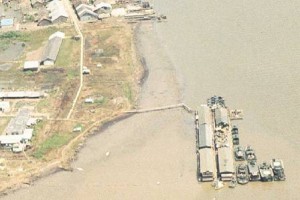
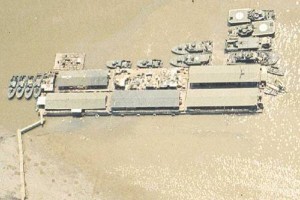
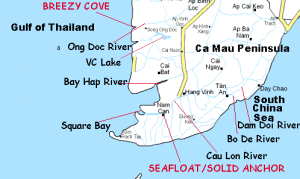
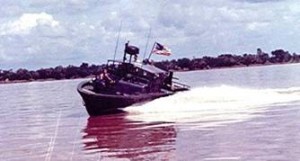
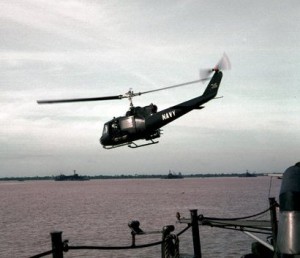
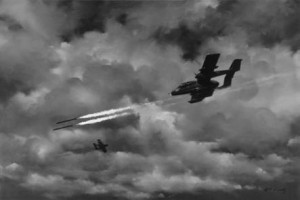
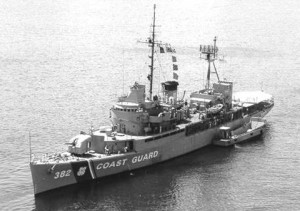
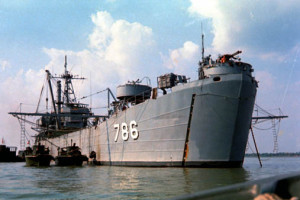
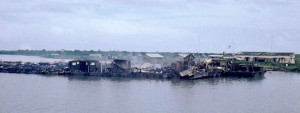
No comments:
Post a Comment